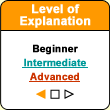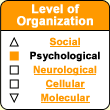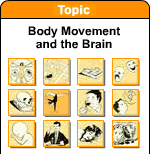|
|
|
|
 |
Making a Voluntary Movement |
 |
|
|
|



In 1998, practically all the members of the Canadian Olympic team said that at least once per day, they used mental imagery sessions to practice for their events. Each of these sessions lasted an average of 12 minutes. Visualizing movements, in addition to making them more efficient and helping the body to recover from them,
also appears to have positive effects on psychological factors such as confidence, concentration, and motivation. |
If you sneak up behind a wine waiter, then lift a bottle off the tray he's carrying, the tray will rise suddenly. But if the waiter lifts the bottle off the tray himself, the tray will not budge an inch, because his brain will anticipate the change in weight and tell his arm muscles how to adjust to it perfectly.
Here's another illustration of the complexity of human motor controls. While sitting at your desk, raise your right leg and rotate your foot clockwise, tracing circles in the air. While continuing to do so, trace the number "6" in the air with your right hand. Now look at your foot: it has started turning in the other direction, even though you never consciously told it to! |
|
|
| MENTAL IMAGING OF BODY MOVEMENTS |
|
What goes into your brain comes from your senses, and what goes
out of your brain is expressed in the form of movement, which implies
the contraction of many muscles. The human body contains at least
600 muscles that move a skeleton of over 200 bones. It thus represents
a formidable arrangement of levers and springs whose precision
mechanisms must be co-ordinated by your nervous system.
In human beings, the planning and execution
of voluntary movements have reached a high level of precision and
originality. We do still have many reflexes that
make our lives easier and that appeared very far back in the
history of evolution. But even our simplest voluntary movements
are governed by extremely
complex motor controls. Some people even say that it is probably
easier to explain how space shuttles are built than to explain
how astronauts make the movements needed to climb on board them.
Learning
new movements takes concentration. But with practice,
performing these movements can become completely automatic.
This freedom from having to think about their movements
is what lets professional musicians express their feelings
when they play, for example. It is achieved by
repeating these movements many times, which, eventually,
increases the efficiency of the
connections in the neural circuits involved.
But there also seems to be another way of improving the
performance of a movement besides repeating it over and
over: simply imagining it! This method is called mental
imagery, and it is being used more and more by athletes
to improve their performance (see sidebar). |
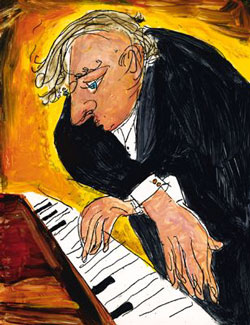 |
If simply rehearsing a movement mentally seems to enable people
to perform it more efficiently, the reason is that the brain does not
seem to make any great distinction between actually performing
a movement and simply visualizing it in the mind's eye.
Ever since Étienne
Jules Marey invented chronophotography (which ultimately
led to the birth of motion pictures), images have been used
to study human movement. By capturing images at regular intervals,
and then superimposing them, we can observe the path followed
by the body's moving parts in all their grace and precision.
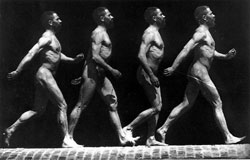 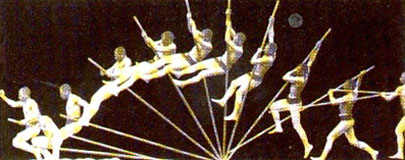
|
The process of learning
a new physical skill by encoding it in a neural circuit may
involve not only increasing the efficiency of some connections
in this circuit, but also, surprisingly, decreasing the efficiency
of others. This is what your cerebellum does
to improve the co-ordination of the new movements that you're
learning. It's as if the cerebellum were calming certain
neural pathways that would otherwise impede the fluidity
of your movements. |
|
|

